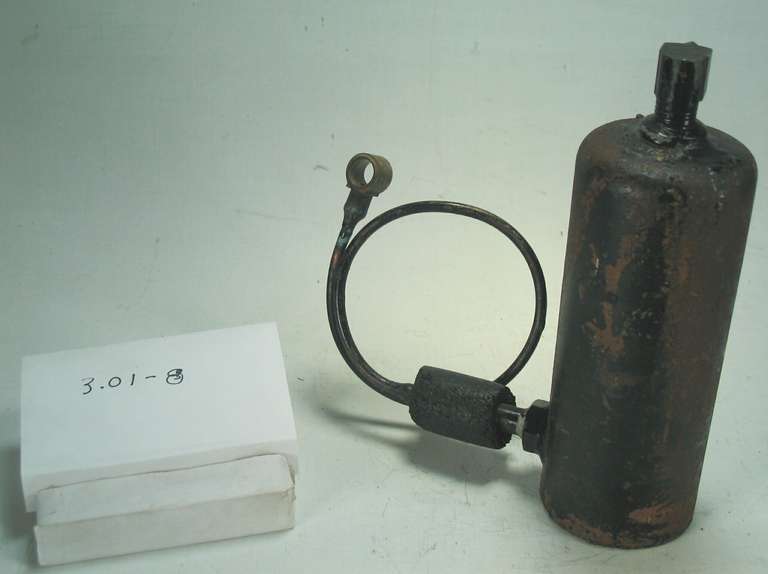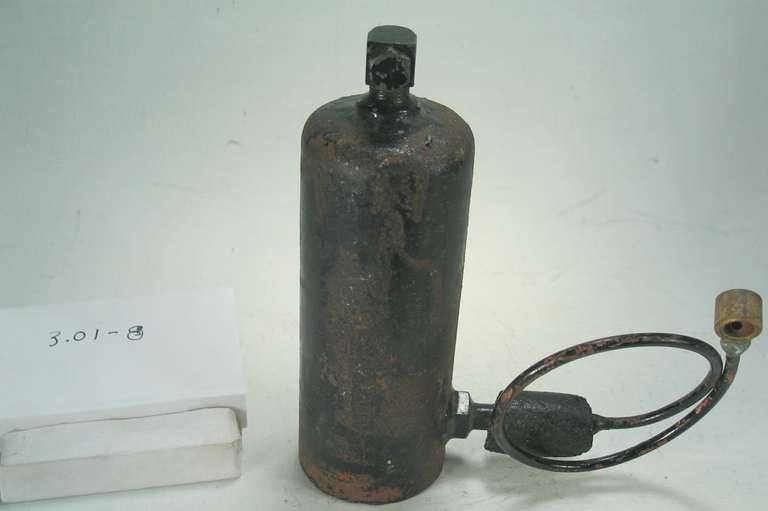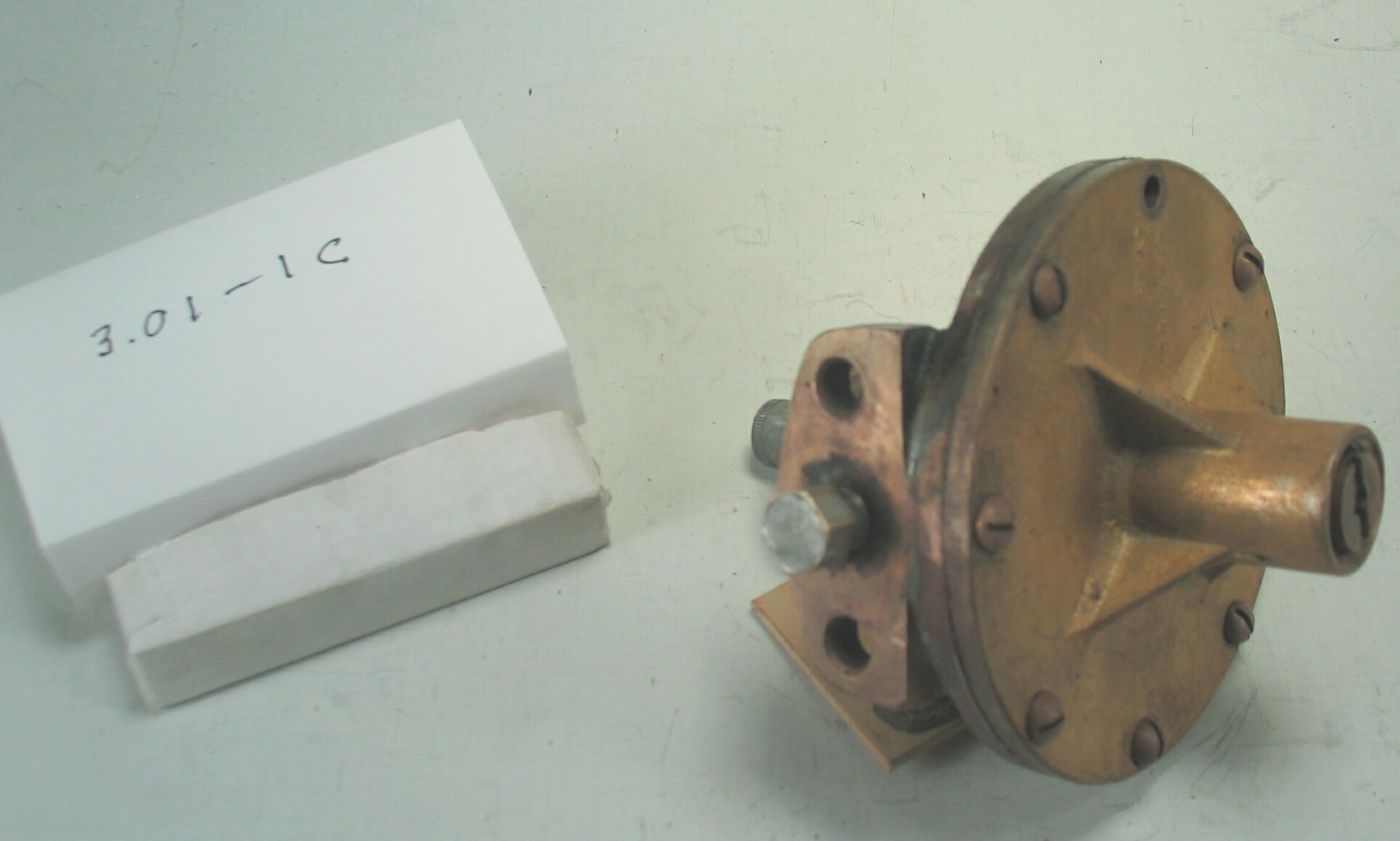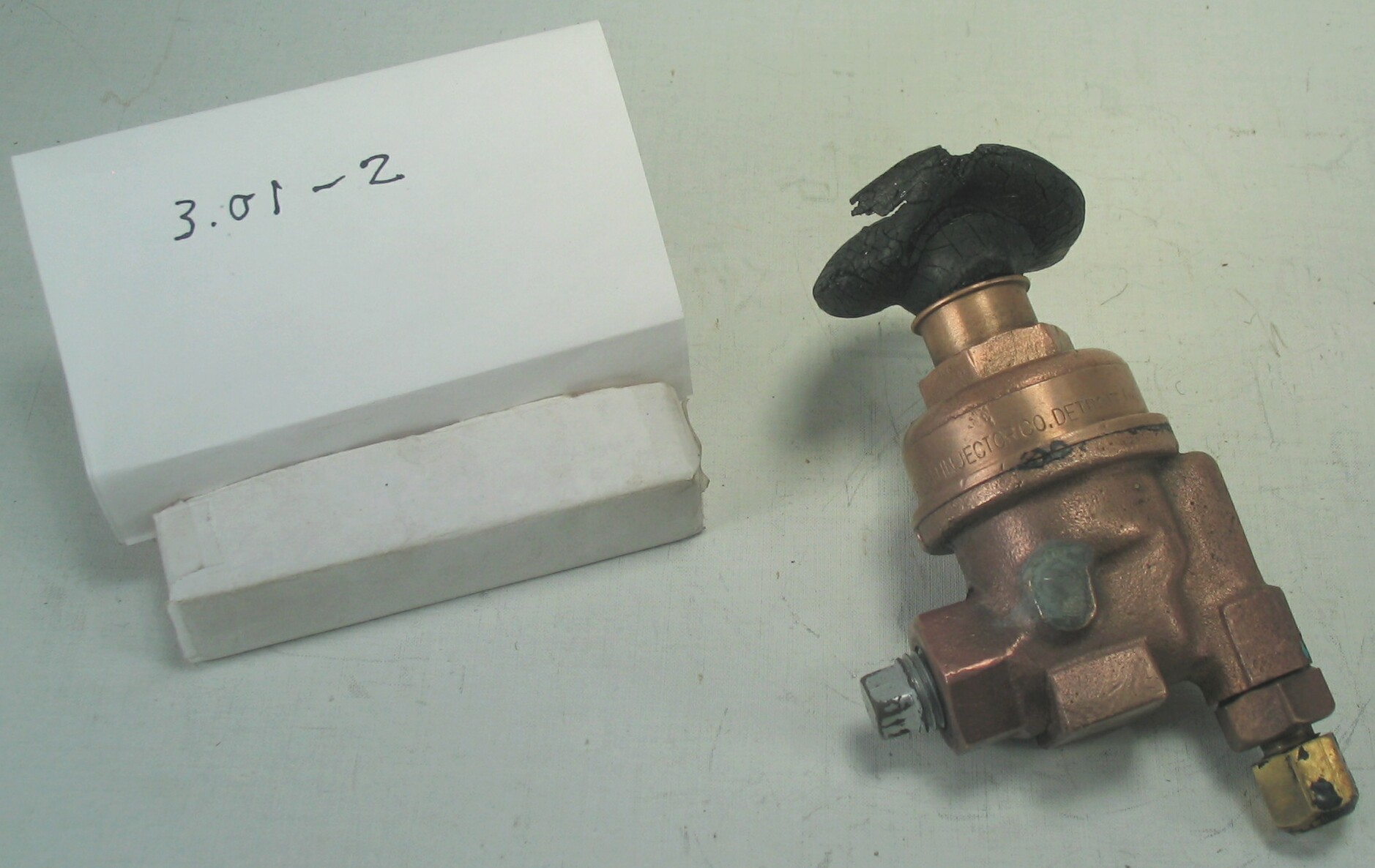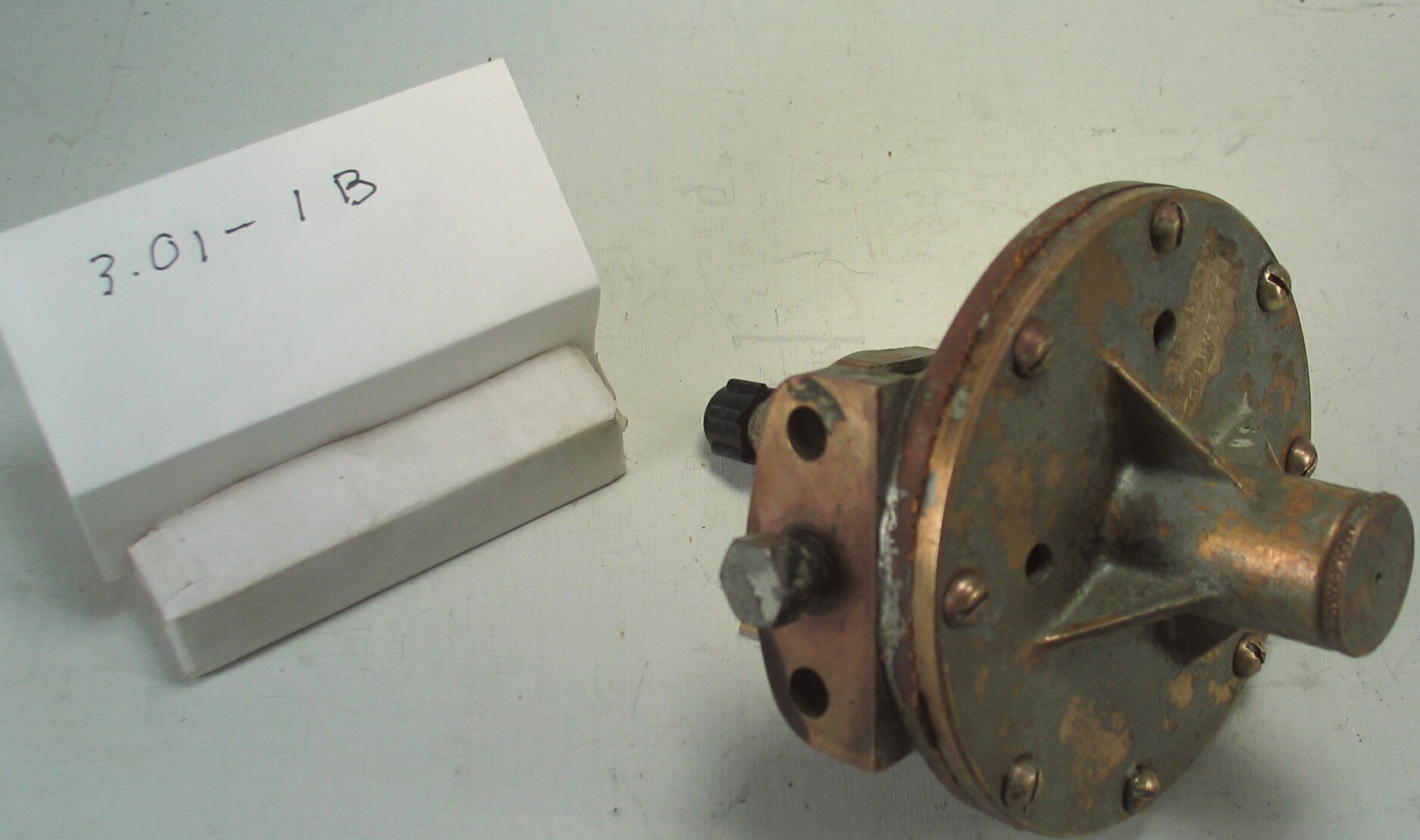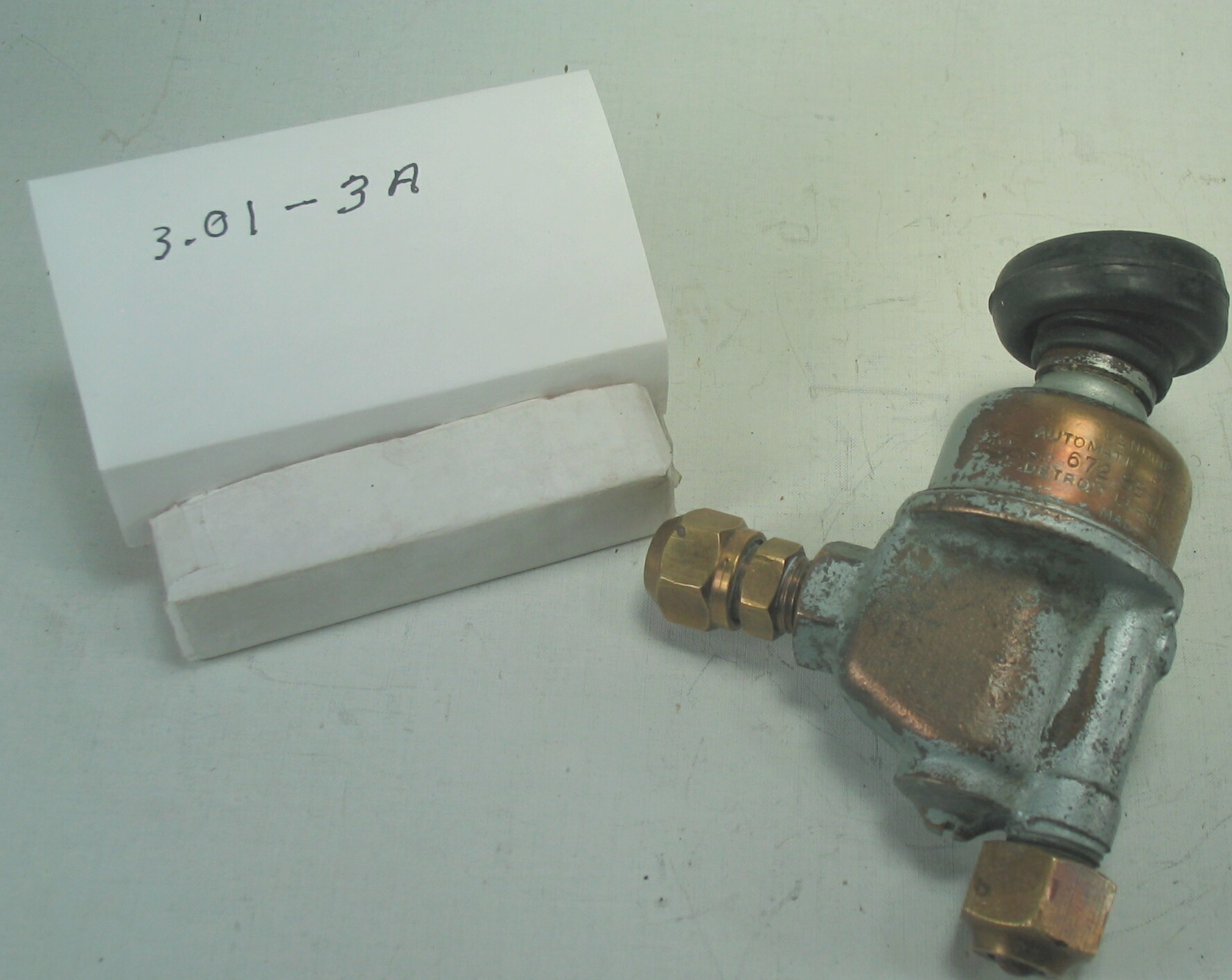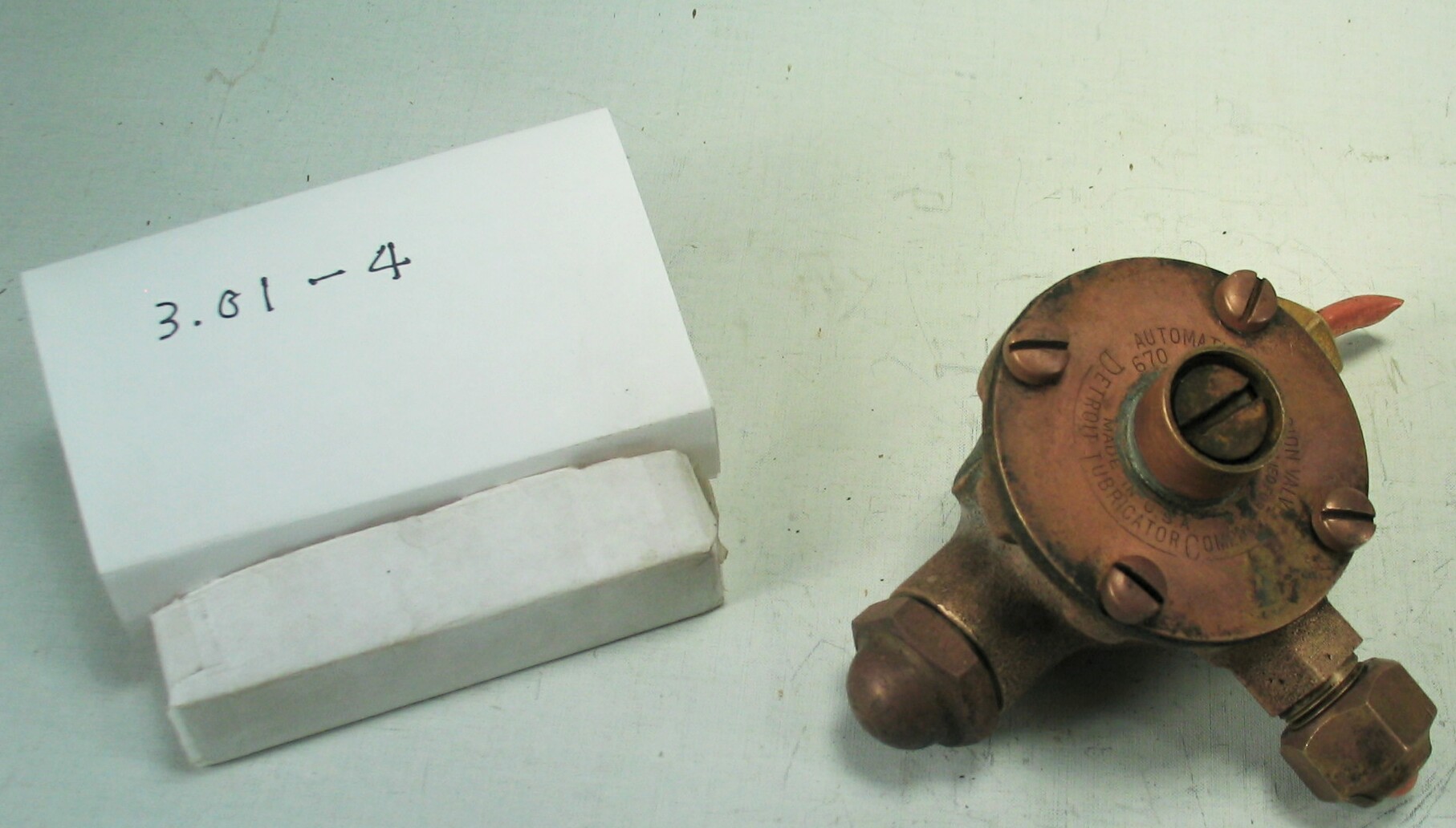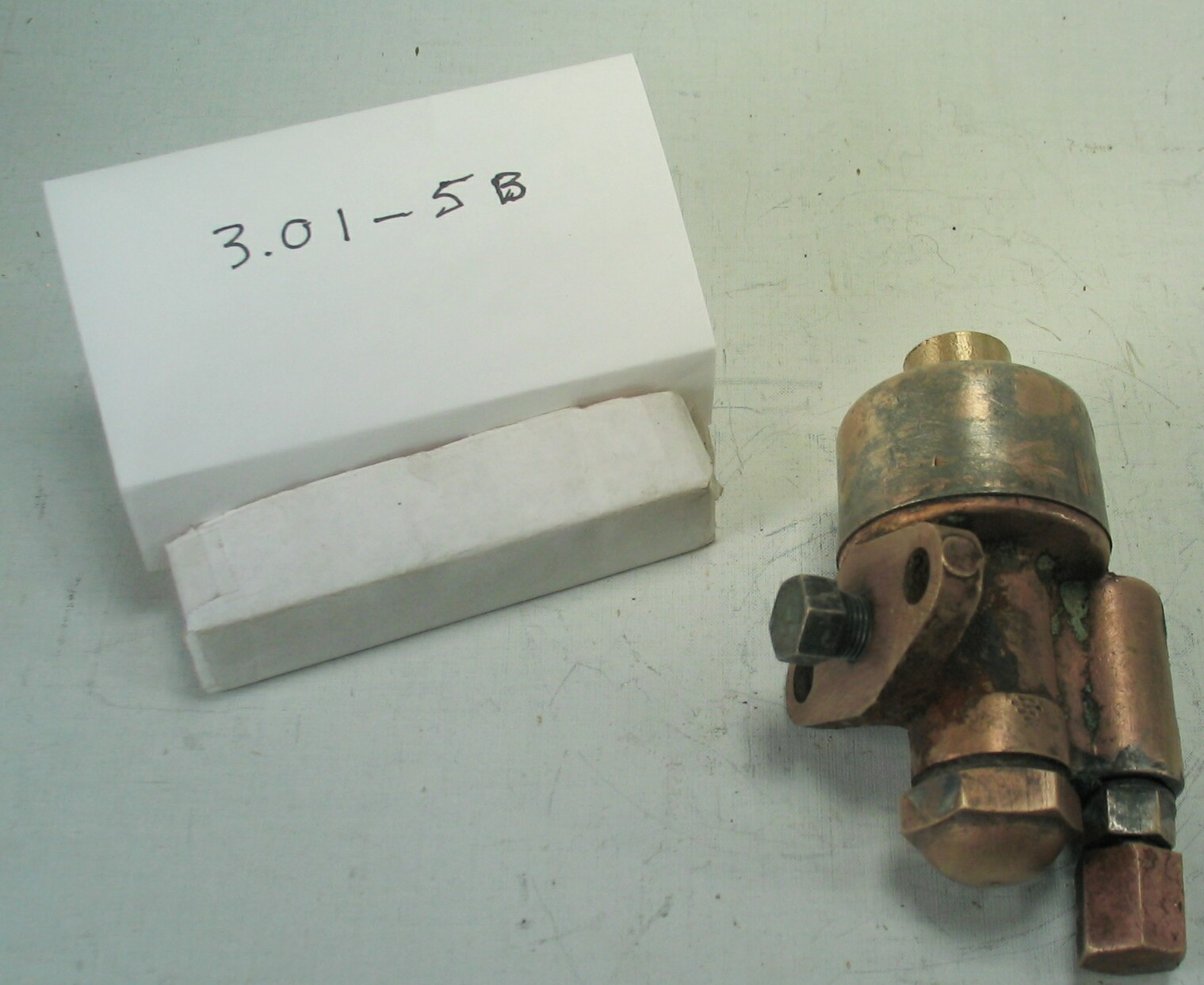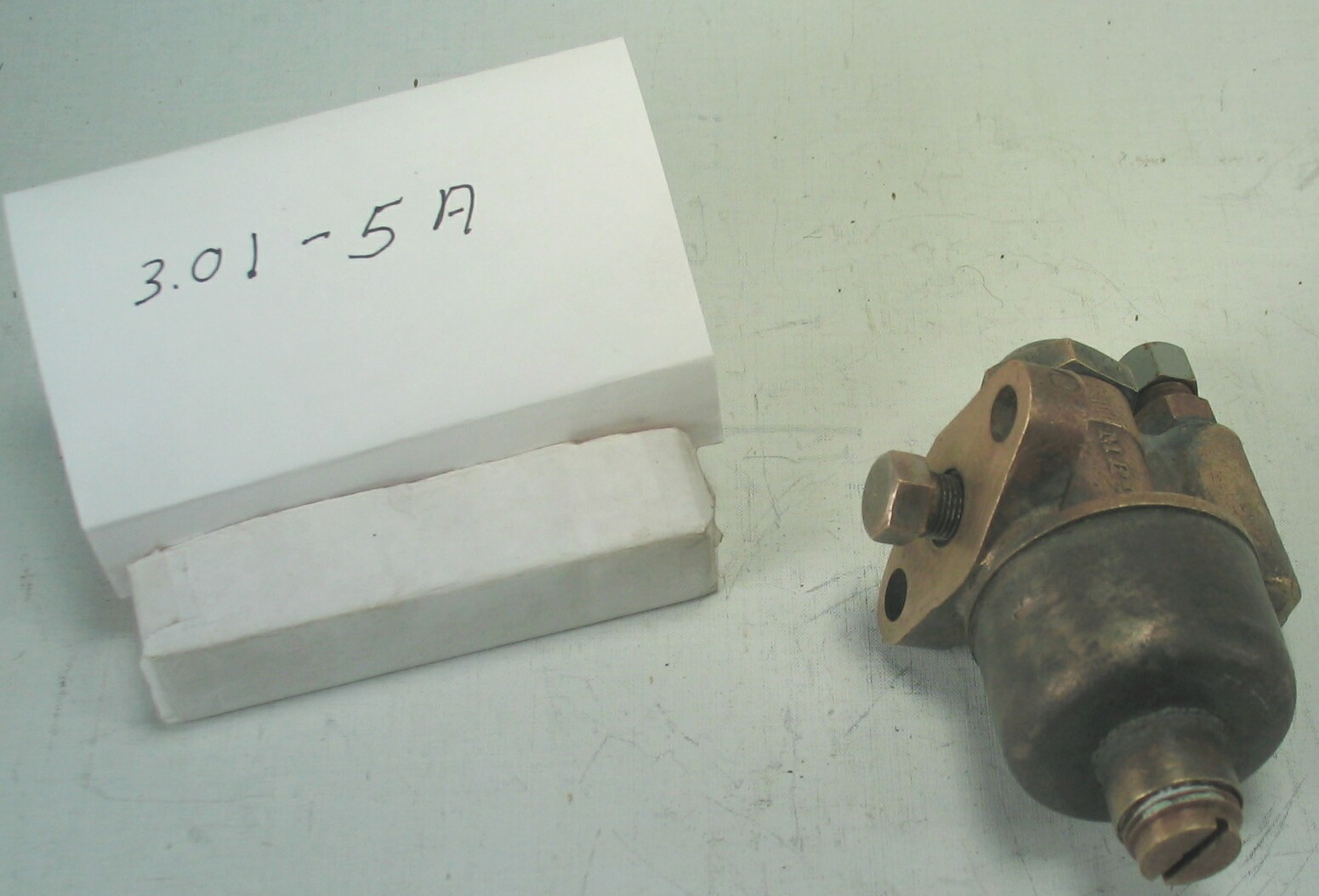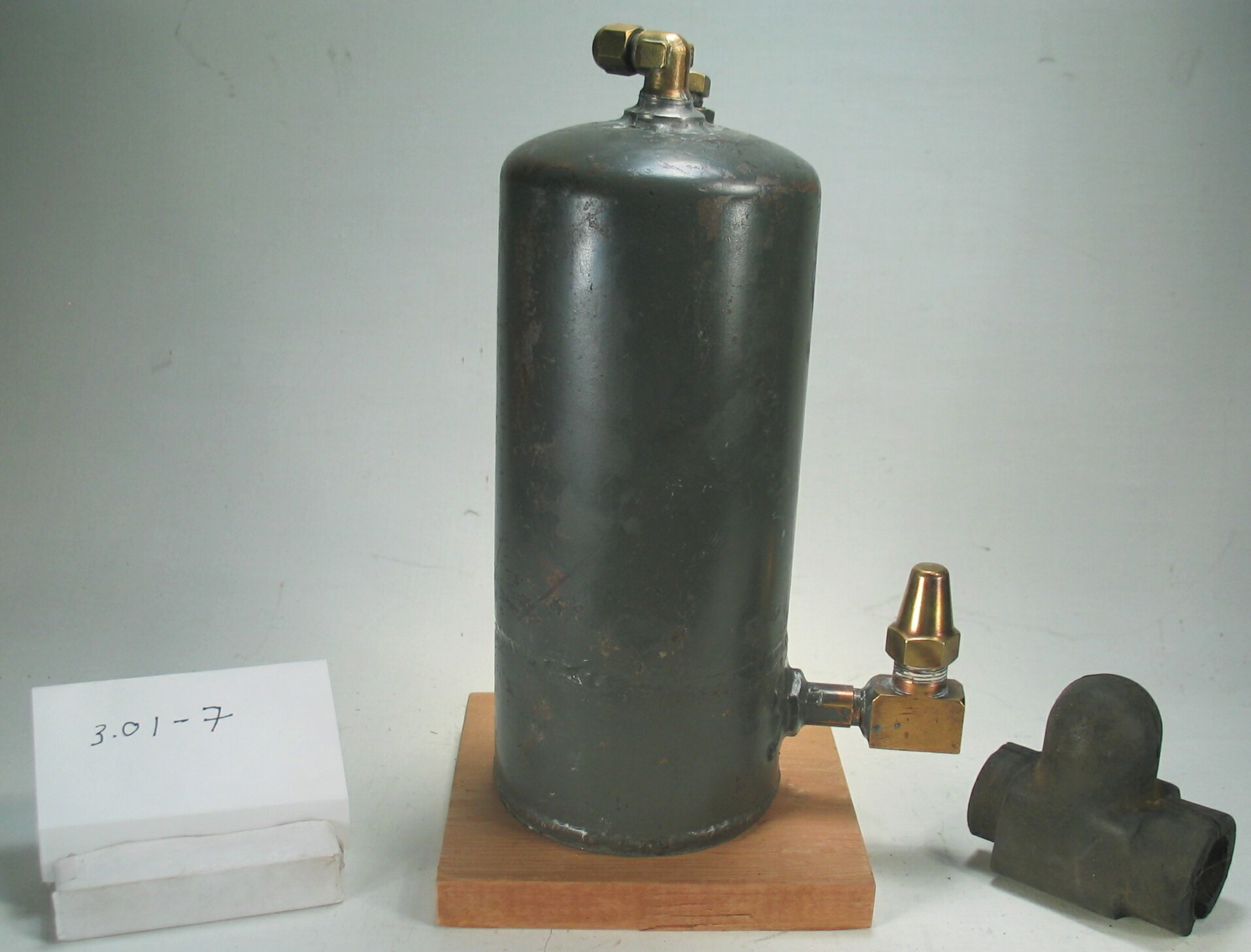3.01-8: Kelvinator 1945 High Side Float Flow Control
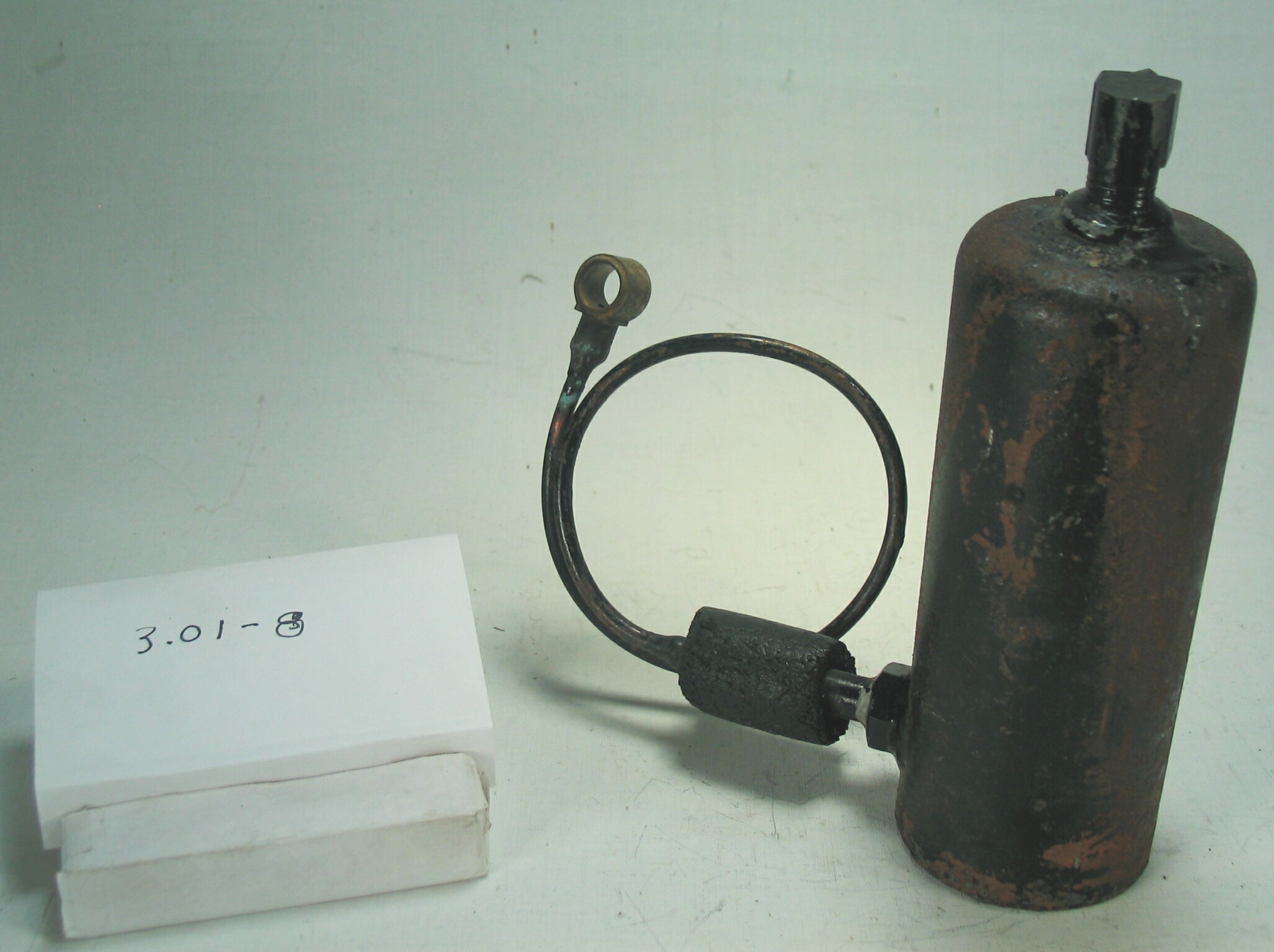
| HHCC Accession No. 2006.052 | HHCC Classification Code: 3.01-8 |
|---|
Description:
Representative of the new generation of compact, more finely calibrated high side float controls for household cabinet refrigerators that emerged into the 1940’s. Housed in a refrigerant receiver, it was used for metering liquid refrigerant into a flooded evaporator Model unknown, Kelvinator of Canada, London Ont., Circa 1945
Group:
3.01 Refrigerant Flow Controls - Household
Make:
Kelvinator
Manufacturer:
Kelvinator of Canada, London, Ont
Model:
unknown
Serial No.:
Size:
3 round x 8 in h
Weight:
1 lbs, 10 oz.
Circa:
1945
Rating:
Exhibit, education, and research quality, illustrating the engineering design, construction, and operating principles, of mid 20th century high side float refrigerant flow control devices. Rare, these devices employed for a short period for metering refrigerant flow into cooling units, were a brief blip in the history of refrigerant metering technology. They were soon to be replaced by simpler, less costly and more reliable devices.
Patent Date/Number:
Provenance:
From York County (York Region) Ontario, once a rich agricultural hinterlands, attracting early settlement in the last years of the 18th century. Located on the north slopes of the Oak Ridges Moraine, within 20 miles of Toronto, the County would also attract early ex-urban development, to be come a wealthy market place for the emerging household and consumer technologies of the early and mid 20th century.
This artifact was discovered in the 1950’s in the used stock of T. H. Oliver, Refrigeration and Electric Sales and Service, Aurora, Ontario, an early worker in the field of agricultural, industrial and consumer technology.
Type and Design:
Liquid level float ball controlled
Construction:
Rolled and welded cylinder with domed top and recessed bottom plate, with copper inlet tube all over coated in black enamel.
Material:
Special Features:
Section of liquid line moulded foam rubber insulated cover Inverted flare tubing connectors, part of a compact tubing connector system evolved in the 1940’s for household and packaged commercial refrigeration equipment applications.
Accessories:
Capacities:
Performance Characteristics:
Operation:
Control and Regulation:
Targeted Market Segment:
Consumer Acceptance:
Merchandising:
Market Price:
Technological Significance:
Typical of the technology as it emerged into the 1940’s, as used briefly, principally by Kelvinator in their household cabinet refrigerators.
A brass float valve and needle seat assembly was located in the base of the refrigerant, liquid receiver, from where the liquid was metered into an insulated liquid line carrying it to the inlet of the evaporator. The float opens the valve at a predetermined level of refrigerant in the receiver, as it is returned from the high side of the compressor. The system is subject to critical refrigerant charge, much like the capillary tube device to follow. However maintaining the critical charge necessary for trouble free operation in open type condensing units, subject to compressor seal and other leaks was always a challenge.
Industrial Significance:
The high side float refrigerant meter system, used for flooded evaporators, was the source of some engineering interest and production in the mid 1930’s, but was then largely abandoned, along with the low side float, for the mainstream of household and small commercial refrigeration applications - for reasons of cost, reliability and serviceability and the engineering design constraints it introduced. By this time much simpler trouble free metering technology was at hand. Kelvinator, it seems, continued the practice later than others, possibly because they had experience and an investment in the technology that others had not.
Socio-economic Significance:
Socio-cultural Significance:
It was a period in which machinery in the home was often not at all welcome, being viewed with the suspicion that comes with novelty. Machinery belonged on the farm and on the factory floor, but not in the Canadian home. Here it was considered noisy and hazardous, a potential threat to personal and private property. The mere notion of a self regulating, mechanical device that could be trusted to stop and start and self regulate itself reliably, over long periods of time was simply not part of popular experience of ordinary Canadians of the time. Thus, in addition to the immense array technical problems which remained to resolved, there was an equally large array of socio- cultural challenges to be over come by manufactures in convincing their public to be early adopters of refrigeration technology in the home - in the face of massive mistrust and apprehension. Conversely however, for those that were in a financial position of enjoying the many benefits of the technology, there were multiple factors tending to attract advocates and early adopters. Included were: the human need to be recognized as an early leader in adoption, the need for socio-economic status in the community, as well as the allure of new taste sensations, a break with the overwhelming, often desperate boredom of the daily dietary offerings of the period.
Donor:
G. Leslie Oliver, The T. H. Oliver HVACR Collection
